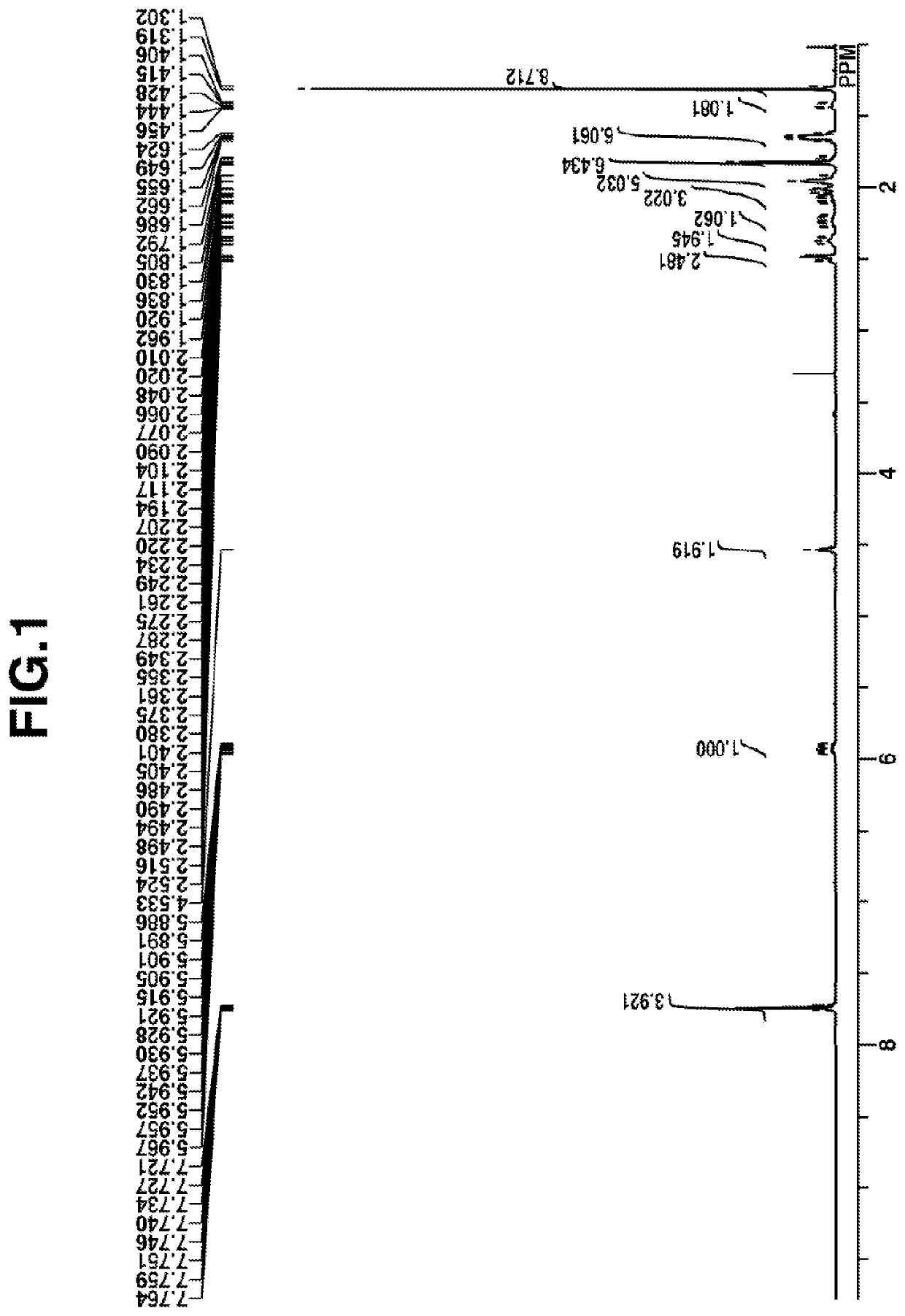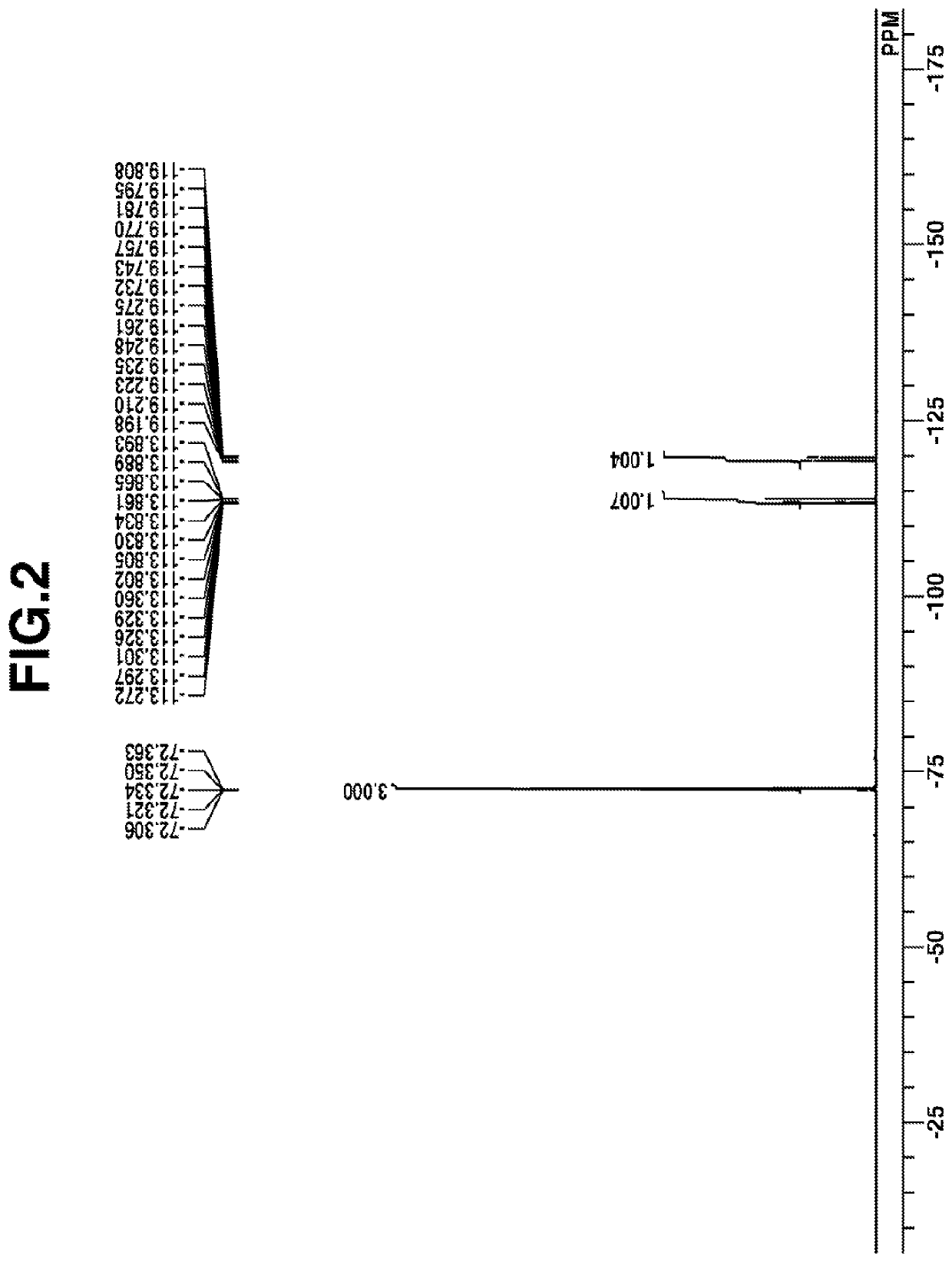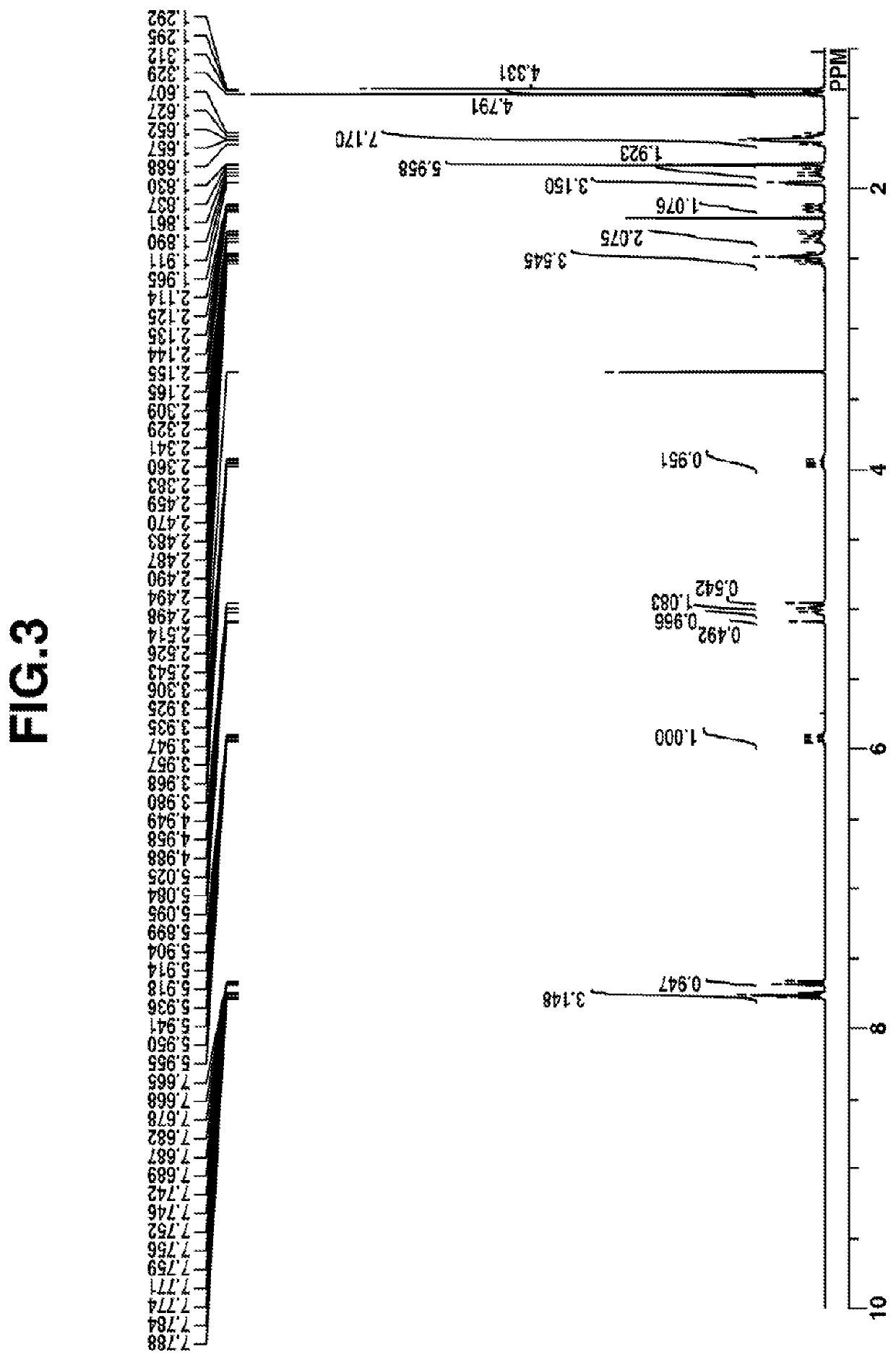Photoacid generator, chemically amplified resist composition, and patterning process
a chemical amplification and composition technology, applied in the direction of photosensitive materials for photomechanical equipment, other chemical processes, instruments, etc., can solve the problem that prior art pags cannot meet the requirements of resist compositions, and achieve good balance of sensitivity and lwr, and effective resist materials
- Summary
- Abstract
- Description
- Claims
- Application Information
AI Technical Summary
Benefits of technology
Problems solved by technology
Method used
Image
Examples
synthesis example 1-1
[0236]Synthesis of Intermediate 1
[0237]
[0238]Under ice cooling, 12 g of p-toluenesulfonic acid chloride was added to a mixture of 5.0 g of cis-1,5-cyclooctane diol and 50 g of pyridine. The mixture was stirred at room temperature for 2 days. Thereafter, 100 g of ice was added to the mixture for cooling, which was poured into 44 g of conc. hydrochloric acid to quench the reaction. The solution was extracted with methylene chloride. The organic layer was washed with water and a saturated sodium hydrogencarbonate aqueous solution, and concentrated under reduced pressure. To the concentrate, methyl isobutyl ether was added. The solution was concentrated under reduced pressure again, obtaining 11.1 g of Intermediate 1 (yield 71%). Intermediate 1 was used in the next reaction without purification.
synthesis example 1-2
[0239]Synthesis of Intermediate 2
[0240]
[0241]In 230 g of dimethyl sulfoxide was dissolved 12.6 g of Intermediate 1. Sodium sulfide pentahydrate, 9.4 g, was added to the solution, which was stirred at room temperature for one week Water was added to the reaction solution, which was extracted with hexane. The organic layer was washed with water and dilute hydrochloric acid. The organic layer was concentrated under reduced pressure, obtaining 3.7 g of Intermediate 2 (yield 94%). Intermediate 2 was used in the next reaction without purification.
synthesis example 1-3
[0242]Synthesis of Intermediate 3
[0243]
[0244]To a mixture of 600 g of tropinone and 5 kg of THF, 1.2 kg of methyl p-toluenesulfonate was added dropwise under reflux. The solution was aged under reflux conditions for 24 hours, and then ice cooled. With stirring, 1.5 kg of diisopropyl ether was added. The resulting suspension was filtered. The solid was washed with diisopropyl ether and vacuum dried, obtaining 1.4 kg of Intermediate 3 (yield 99%).
PUM
 Login to View More
Login to View More Abstract
Description
Claims
Application Information
 Login to View More
Login to View More - R&D
- Intellectual Property
- Life Sciences
- Materials
- Tech Scout
- Unparalleled Data Quality
- Higher Quality Content
- 60% Fewer Hallucinations
Browse by: Latest US Patents, China's latest patents, Technical Efficacy Thesaurus, Application Domain, Technology Topic, Popular Technical Reports.
© 2025 PatSnap. All rights reserved.Legal|Privacy policy|Modern Slavery Act Transparency Statement|Sitemap|About US| Contact US: help@patsnap.com



